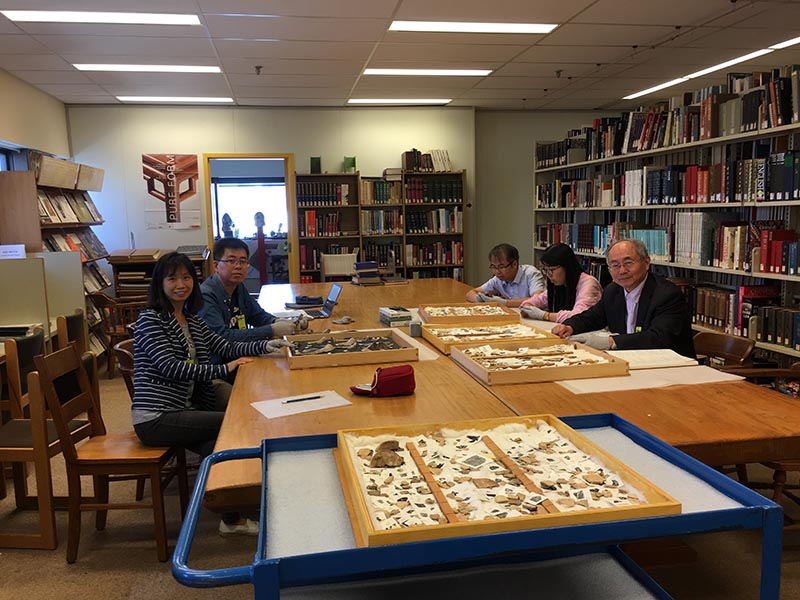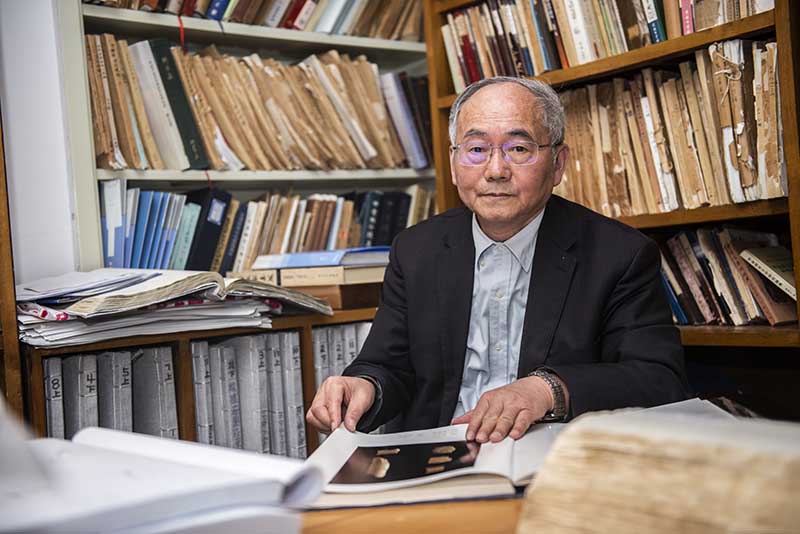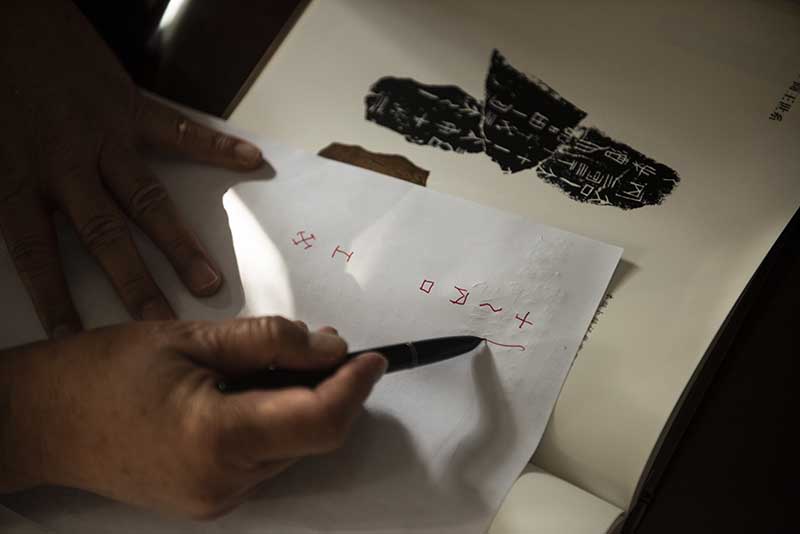Huang Tianshu: Scripting Chinese Culture

Huang Tianshu is a famous scholar who concentrates on the research of ancient Chinese writing. In the late 1980s, when he was pursuing a doctoral degree at the Department of Chinese Language and Literature of Peking University, Huang creatively designed a more accurate and detailed classification method for different written forms of oracle bone script and more precisely determined the approximate eras of each written form, based on the findings of previous scholars. His theory and method are now widely accepted by the academic circles researching the oracle bone script.

In 2011, Huang led a team to compile The Compendium of the Transcriptions of Oracle Bone Inscriptions. The book contains more than 80,000 transcriptions of oracle bone inscriptions, all carefully copied by editors. Smashing the record of the 40,000-plus oracle bone inscriptions in The Collection of Oracle Bone Script, China’s first large monograph on the subject, it has emerged as the most authoritative book on the oracle bone script with the largest amount of materials, clearest character patterns and most comprehensive forms.
China Pictorial (CP): The oracle bone script is an important branch of ancient Chinese writing. Some characters could be identified immediately when it was discovered 120 years ago. What specific methods are employed to identify oracle bone inscriptions?
Huang Tianshu: China has preserved the greatest wealth of ancient writing resources in the world. Academic circles now generally agree that ancient Chinese writing refers to scripts before Emperor Wudi (140-87 B.C.) of the Western Han Dynasty (202 B.C.-8 A.D.). Present research of ancient Chinese writing covers several branches such as the oracle bone script, and bronze script (inscriptions on ritual bronzes) and writing on bamboo, wood and silk.
Unlike hieroglyphics used in ancient Egypt, the oracle bone script has not died out after thousands of years, but gradually evolved into current Chinese writing. Some oracle bone inscriptions are very similar to current Chinese characters. For example, the Chinese character for “people” is almost identical from beginning to present. Therefore, when the first oracle bone inscriptions were discovered, researchers quickly identified some characters by comparing them with xiaozhuan (seal script), the first formalized Chinese system of writing originating in the Qin Dynasty (221-207 B.C.). Later, the “character components” analyzing method was also employed. A character was divided into different structural parts to be identified. Then, the character is put back into the original text to see if the hypothesis is right. Moreover, scholars can use ancient books to identify oracle bone inscriptions. For example, using characters they know, if researchers can identify one sentence on a piece of oracle bone as a line in a poem recorded in The Book of Songs dating from 1100 to 600 B.C., they can compare all the characters and identify more.

CP: How have your research achievements on the classification and periodization of written forms changed oracle bone script research?
Huang: In the late 1980s, I followed the guiding principle proposed by Li Xueqin, a renowned Chinese historian and expert on ancient Chinese writing to begin my work. We classified characters according to their different written forms, and then we used other evidence to determine the historical era of each category. Determining the historical era of each piece of oracle bone is important to identify and understand the script as well as to study the history behind it.
Statistics show about there are 4,500 individual characters on oracle bones. Among them, only about a third have been recognized. Most of the remaining 3,000 unrecognizable characters are names of people and places. Currently, identification of oracle bone inscriptions has become a discipline involving diverse subjects such as archeology, history and philology. But the most difficult step remains achieving acceptance from the academic community, which requires verification over a long period of time. In addition to using already recognized and accepted oracle bone inscriptions for verification, archeological excavations and documents also serve the same purpose. Discovery of new relics has sometimes caused widely accepted characters to be overturned.
CP: In which ways has the modern Chinese language changed or not since the oracle bone script? Since the late Qing Dynasty (1644-1911), some have advocated romanization of the Chinese language. Do you think Chinese characters will eventually be replaced by alphabetic writing?
Huang: The grammar on the oracle bone script is not much different from modern Chinese grammar, but the phonetics and vocabulary have changed greatly. Compared with feminine and masculine words in some European languages, Chinese grammar is characterized by relatively isolated morphemes and strict sentence order. In this respect, the oracle bone script is largely the same as modern Chinese.
Starting from the late Qing Dynasty, some scholars argued that the Chinese language is harder to learn than English and that the country’s backwardness was because of poor education. They proposed abolition of Chinese characters as a means of progress. Some old-generation Chinese linguists had another misconception. They believed that since ideographic writing emerged first followed by ideo-phonographic writing and then alphabetic writing, Chinese characters would eventually develop into the alphabetic writing system. That idea was wrong. No writing system in the world is composed of only ideograms. Hieroglyphics of ancient Egypt and cuneiforms developed by the ancient Sumerians of Mesopotamia, both time-honored writing systems, used ideograms and phonograms at the same time.

Chinese characters and alphabetic writing are two different types of writing, just like Chinese and Western architectural styles. Each has its own merits. Alphabetic writing is indeed easier to learn but from a textual perspective, its sounds change easily and changes in time and space can easily affect the sounds. The “appearances” of Chinese characters saw few changes over a long period of time. Thus, scholars today can read the millennia-old oracle bone script. Today, people use both characters and pinyin romanization to record the Chinese language. The latter is alphabetic writing. No one in China today advocates pinyin romanization to replace Chinese characters. The Chinese characters we use today are the legacy of the oracle bone script. This inheritance is the root of Chinese culture. Chinese characters will continue to coexist with pinyin romanization and flourish.